It’s quality over quantity in National Highways
Sustainability, road safety and traffic management systems have started driving capital expenditure (capex) in the roads sector as the government prioritises quality over quantity.
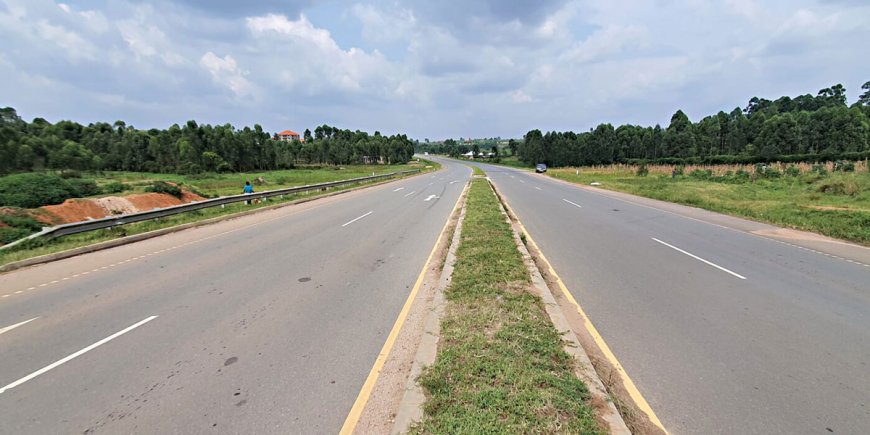
Sustainability, road safety and traffic management systems have started driving capital expenditure (capex) in the roads sector as the government prioritises quality over quantity.
With the emphasis shifting to prioritising corridor efficiency, road user experience and road safety, the pipeline of National Highways awards hit a speed bump last fiscal after a decade of steady progress that saw the network expand to almost 180,000 km from 66,000 km in calendar year 2004.
The volume of project awards declined an estimated 40% on-year due to the 2024 general elections and a focus on re-prioritising of existing highway programmes – Bharatmala is expected to be replaced by a national highway master plan soon.
Monetisation efforts through the toll-operate-transfer (TOT) model have slowed, too. Further, only a few build-operate-transfer (BOT)-toll stretches, out of the 53 identified in early calendar 2024, have reached completion.
A closer look throws up interesting insights on the opportunities and challenges as well as the trends shaping the sector.
Sustainable construction
The industry is adopting eco-friendly practices to reduce carbon emissions.
Recycling and re-processing are the key initiatives, with shredded waste plastic used as a substitute for bitumen in roads, sequestering carbon. Existing road surfaces are being reused to build new layers, known as reclaim asphalt pavement or RAP.
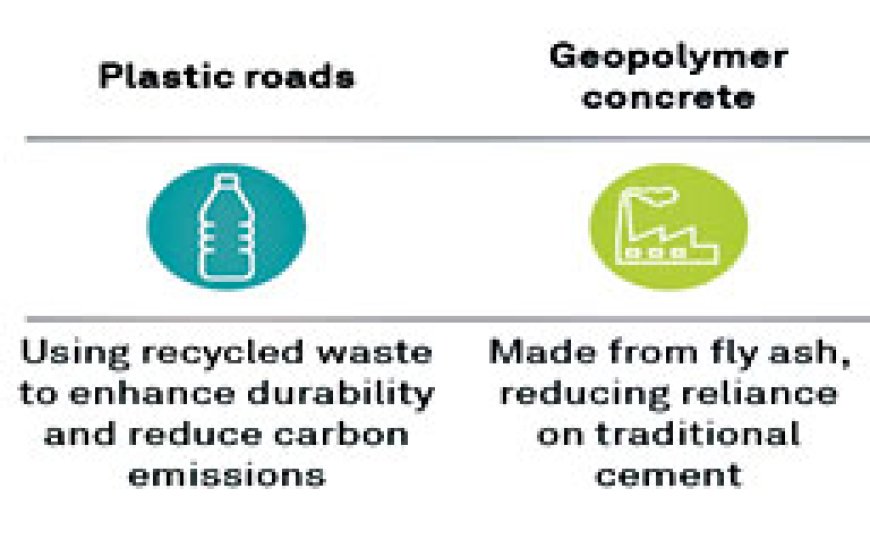 Use of geopolymers, a fly ash-based alternative to cement, reduces CO2 emissions while exhibiting traditional concrete properties. As per the Ministry of Environment, Forests and Climate Change (MoEFCC), road developers are required to source fly ash from coal-fired thermal power plants within a 300 km radius of the project site.
Use of geopolymers, a fly ash-based alternative to cement, reduces CO2 emissions while exhibiting traditional concrete properties. As per the Ministry of Environment, Forests and Climate Change (MoEFCC), road developers are required to source fly ash from coal-fired thermal power plants within a 300 km radius of the project site.
For road embankments, trials are being conducted to mix natural soil with urban solid waste and traditional stone aggregates with steel slag. Additionally, tunnel muck is being used to produce concrete and road aggregates, thereby reducing waste and conserving materials.
Warm mix asphalt (cold mix), produced at lower temperatures, is also being encouraged to reduce fuel consumption during heating of bitumen and subsequent emissions of the plants.
Solar-powered highways are also being developed, with mini solar plants powering toll plazas, highway lighting systems, and traffic management systems, thereby offsetting emissions and enhancing energy efficiency, as seen on the Delhi-Meerut Expressway.
Barrier-free tolling
Implementing Global Navigation Satellite System (GNSS)-based multi-lane free-flow tolling enables barrier-free, uninterrupted traffic movement, charging users based on distance travelled (closed instead of open loop). This promotes fairness through pay-as-you-go and efficiency via reduced wait times. A phased rollout for category M and N class of vehicles is expected by 2026 as per media reports.
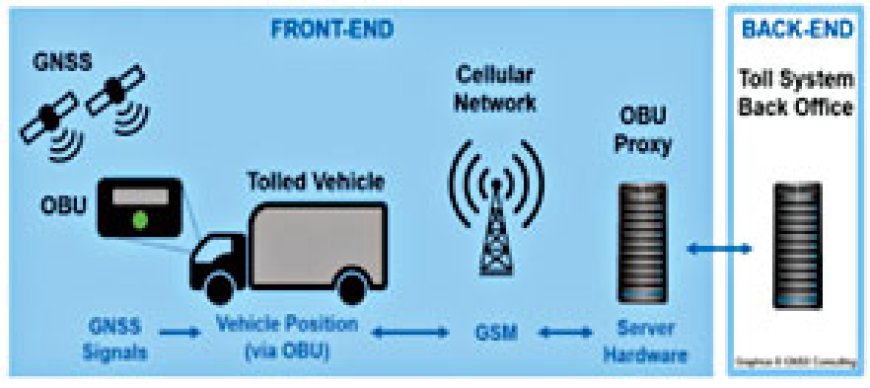
Source: Presentation by Indian Highways
Management Company Ltd, June 2024
Road safety
The government aims to reduce road accidents and fatalities by half by 2030, in line with the United Nation’s Second Decade of Action on Road Safety, by adopting safety in the road planning stage and providing additional services on built roads.
With over 1.7 lakh fatalities annually, road accidents cause a significant socio-economic impact, accounting for a 3.14% loss in gross domestic product (about Rs 5 lakh crore).
Constant monitoring and proactive efforts are required to identify and mitigate new risks and blackspots.
Key challenges in road safety
Traffic management systems
The revised Advanced Traffic Management System circular of 2023 introduces advanced electronics and artificial intelligence-enabled technologies to enhance traffic management.
This includes CCTV cameras, speed monitoring and automatic number plate recognition to provide real-time traffic updates, swift emergency services, improved traffic enforcement, and enhanced incident reporting and response time tracking.
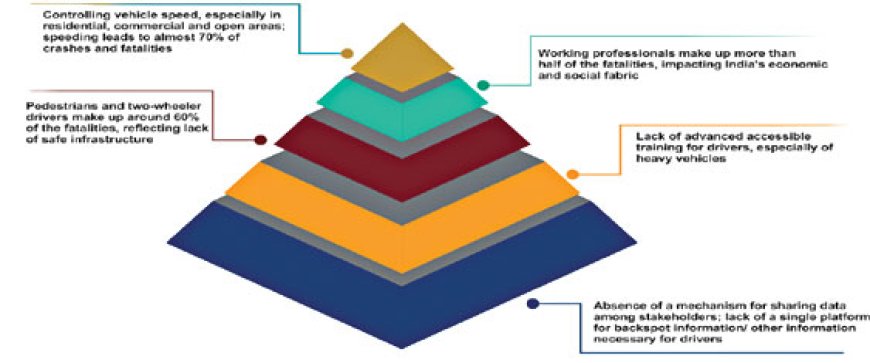
DPR practices
The preparation of Detailed Project Reports (DPRs) has undergone policy-level interventions, focusing on improving coverage and outcomes.
DPRs now require the use of remote sensing technologies (e.g., LiDAR), drone satellite imagery and updated Survey of India data to survey ground features and gather topography and survey data.
The use of modern technology, such as network survey vehicle for road condition assessments and aerial surveys and terrestrial LiDAR for greenfield alignment planning, has been made mandatory.
DPR consultants are being encouraged to use the PM Gati Shakti portal, through NHAI’s local project offices, for alignment planning, and to enable quicker approvals and clearances with other stakeholders.
Furthermore, since the second half of 2022, MoRTH introduced a mandatory training for DPR consultants through the Indian Academy of Highway Engineers.
Bidding process
In recent years, the National Highways Authority of India (NHAI) has developed projects under various contracts, including engineering, procurement and construction (EPC) and hybrid annuity model (HAM), which splits financial risks between the authority (40%) and the private entity (60%). The split is shown in the chart below.
 Image source: Crisil Research.
Image source: Crisil Research.
Additionally, the NHAI introduced the toll operate toll (TOT) model, wherein EPC projects are awarded for 20 years, including operations and maintenance obligations against an upfront concession fee.
The TOT model is also applied to HAM projects. Here, the existing concessionaire maintains the project until the end of the HAM concession period, after which it is handed over to the TOT concessionaire, who collects tolls until the end of the HAM concession.
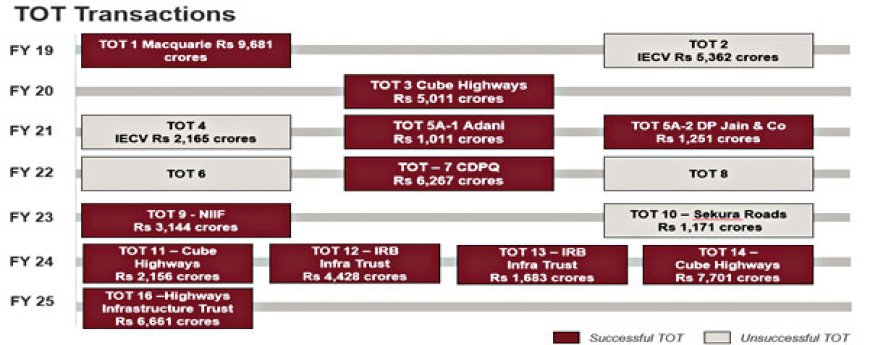
Image source: Crisil Research.
Overview of road projects
Over the past decade, the government’s capex budget has primarily focused on developing infrastructure and improving physical connectivity, with significant emphasis on road development.
The strong pace of road execution is expected to continue this fiscal, riding on the large volume of project awards between fiscals 2021 and 2023.
Following a normalisation in project awards in fiscal 2024, they were expected to increase post-elections with the launch of new schemes.
Capex growth to normalise
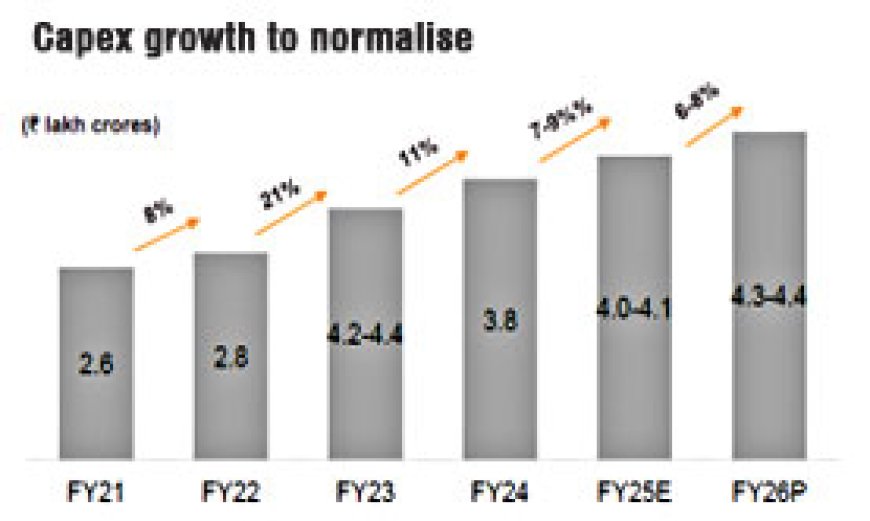
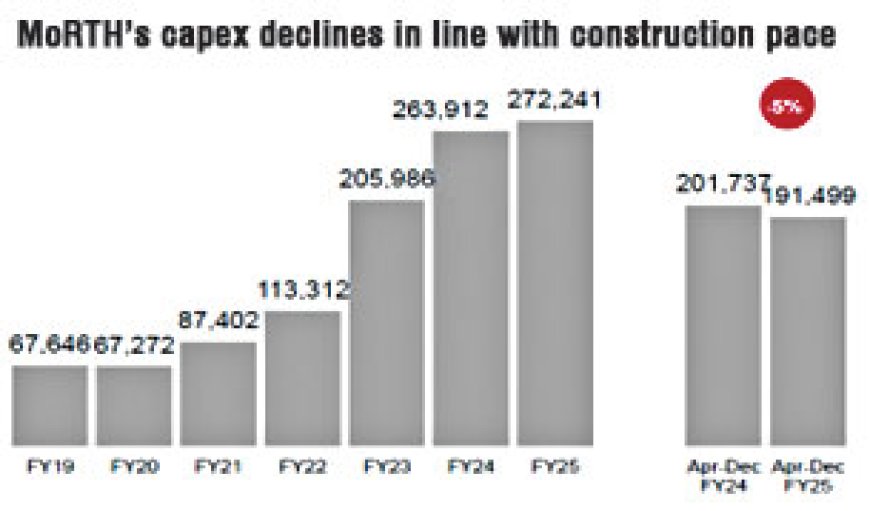
MoRTH’s capex declines in line with construction pace
The share of BOT projects and private sector participation are likely to increase, driven by new concession agreements and government initiatives.
The implementation of the FASTag system led to a surge in average daily toll collections to Rs 178 crore in fiscal 2024 from Rs 76 crore in fiscal 2021.
National Highways account for 88-90% of total toll collections, State Highways for 9-10% and MoRTH’s assets for the rest.
The road ahead
Investments in the road sector will clock a robust compound annual growth rate of 11% between fiscals 2026 and 2030.
Private sector participation will increase with policy reforms and the government’s renewed focus on the BOT model. The NHAI has identified several projects to revive the BOT-toll model.
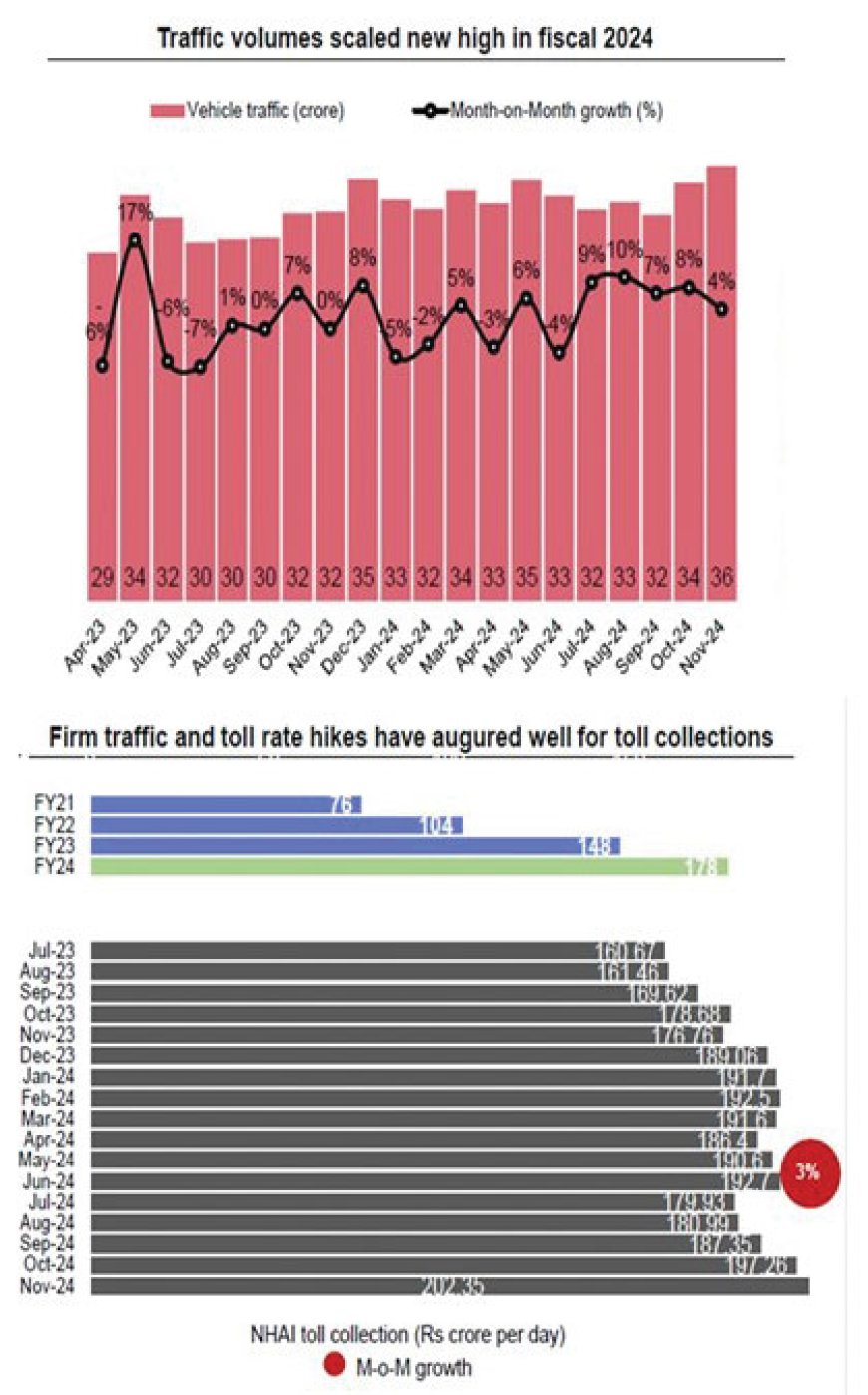
A robust pipeline of projects and better execution will underpin strong capex growth.
Steady budgetary allocations, combined with financing avenues such as investment trusts and the National Investment and Infrastructure Fund, will help address financing constraints and support project execution through the EPC mode.
Towards a global sustainability benchmark
The development of physical and digital infrastructure is enhancing India’s ease of doing business.
Emerging road construction technologies, such as plastic roads and reclaimed asphalt pavement, are driving a shift towards sustainability, reducing carbon emissions by up to 30%.
By integrating innovative materials and advanced construction techniques, India’s road infrastructure can set global sustainability benchmarks.
For this, sustainable methods should be prioritised in project planning and viability assessments, considering both traditional internal rate of return (IRR) and sustainability-factored IRR perspectives.










